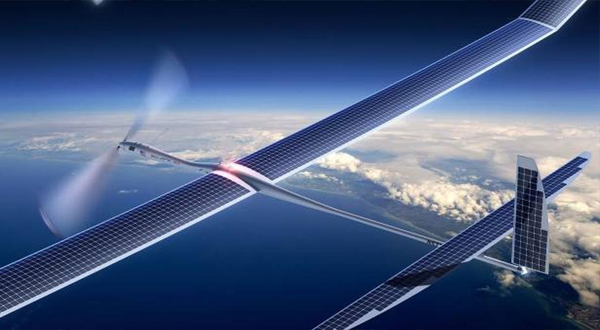Facebook has revealed its first full-scale drone, which it plans to use to provide internet access in remote parts of the world.
Code-named “Aquila”, the solar-powered drone will be able to fly without landing for three months at a time, using a laser to beam data to a base station on the ground.
Like Google, Facebook is experimenting with delivering Internet access to people unlikely to be served by traditional landlines or cellular networks. According to the U.N.’s International Telecommunication Union, 43.4% of the world’s population doesn’t use the Internet.
“We are exploring a number of different approaches to this challenge, including aircraft, satellites and terrestrial solutions,” Yael Maguire, who heads up Facebook’s Connectivity lab.
I’m excited to announce we’ve completed construction of our first full scale aircraft, Aquila, as part of our Internet.org effort. Aquila is a solar powered unmanned plane that beams down internet connectivity from the sky. It has the wingspan of a Boeing 737, but weighs less than a car and can stay in the air for months at a time. We’ve also made a breakthrough in laser communications technology. We’ve successfully tested a new laser that can transmit data at 10 gigabits per second. That’s ten times faster than any previous system, and it can accurately connect with a point the size of a dime from more than 10 miles away.This effort is important because 10% of the world’s population lives in areas without existing internet infrastructure. To affordably connect everyone, we need to build completely new technologies. Using aircraft to connect communities using lasers might seem like science fiction. But science fiction is often just science before its time. Over the coming months, we will test these systems in the real world and continue refining them so we can turn their promise into reality. Here’s a video showing the building of Aquila.
Posted by Mark Zuckerberg on Thursday, July 30, 2015
How Aquila functions
Aquila is solar powered, and when launched, it will create a 50-km communications radius for up to 90 days, beaming a signal down to the people in that area. This signal will be received by small towers and dishes that will then convert it into a Wi-Fi or LTE network that people can connect to with their cellphones and smartphones.
To make all of that possible, Facebook had to make the plane really big and really light. Aquila has the wingspan of a Boeing 737 airplane but weighs a third as much as an electric car. The monocoque wing is made from a cured carbon fiber that is stronger than steel for the same mass of material. Before it’s cured, the material is flexible, so it can be molded into the right shape.
Aquila will fly at between 60,000 and 90,000 feet during the day — above commercial air traffic and above the weather. The air at that altitude is thin, about 5 percent that of sea level, so we utilized a high aspect ratio wing and an undercambered airfoil in the design to optimize its lift-to-drag ratio. During the day, the aircraft will fly at 90,000 feet to maximize its ability to charge its solar cells. At night, it will glide down to 60,000 feet, taking advantage of gravitational potential energy to consume less power.
The communication payload sits in the center of the aircraft, in the fuselage. Not only do aircraft allow us to not have to dig to lay down fiber backhaul, but aircraft have the added benefit of allowing the onboard communications technology to be upgraded at whatever rate is required to meet the market needs.
Test flights for the full-scale model should begin later this year, following the sub-scale flight tests from earlier in the year in the U.K.





